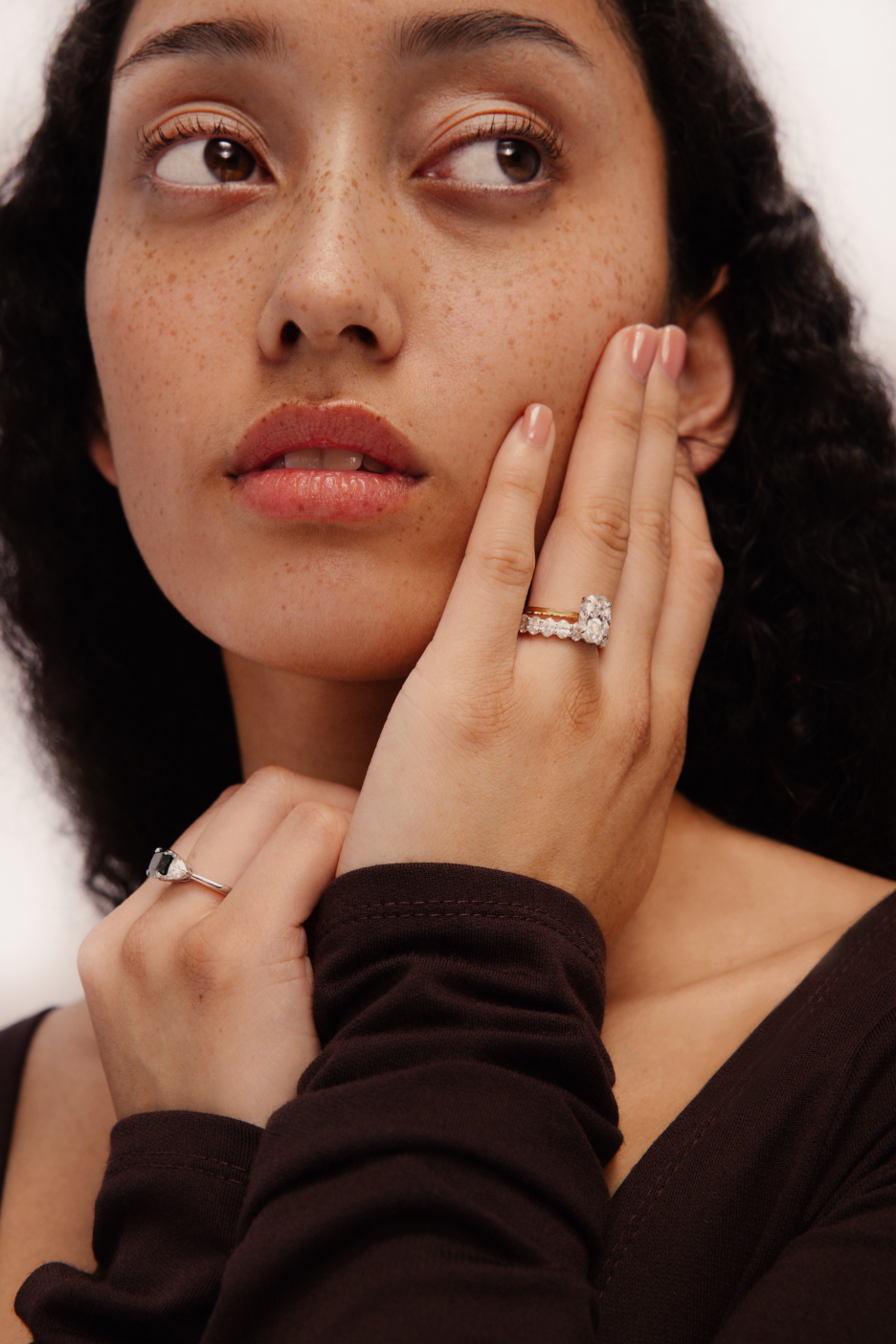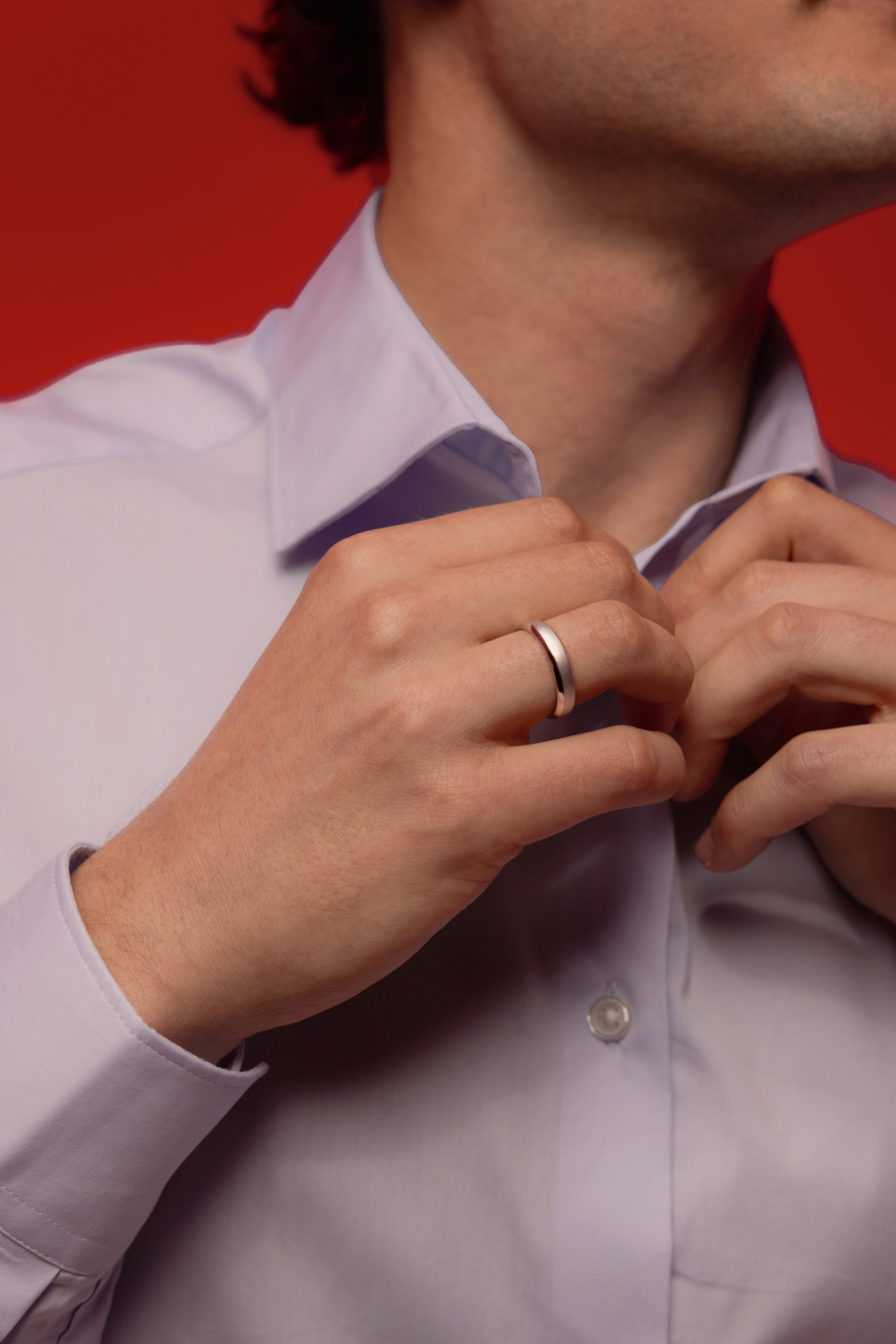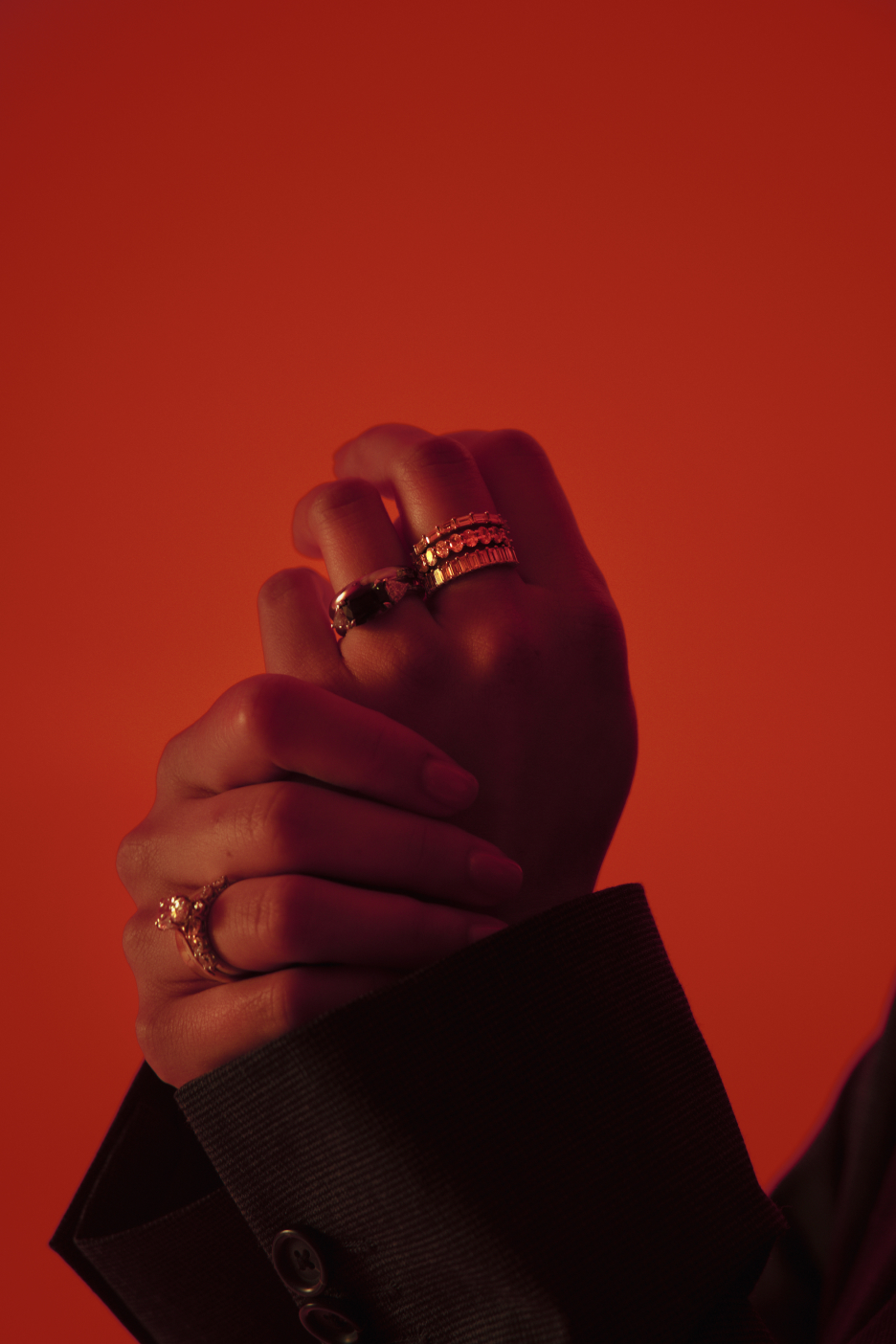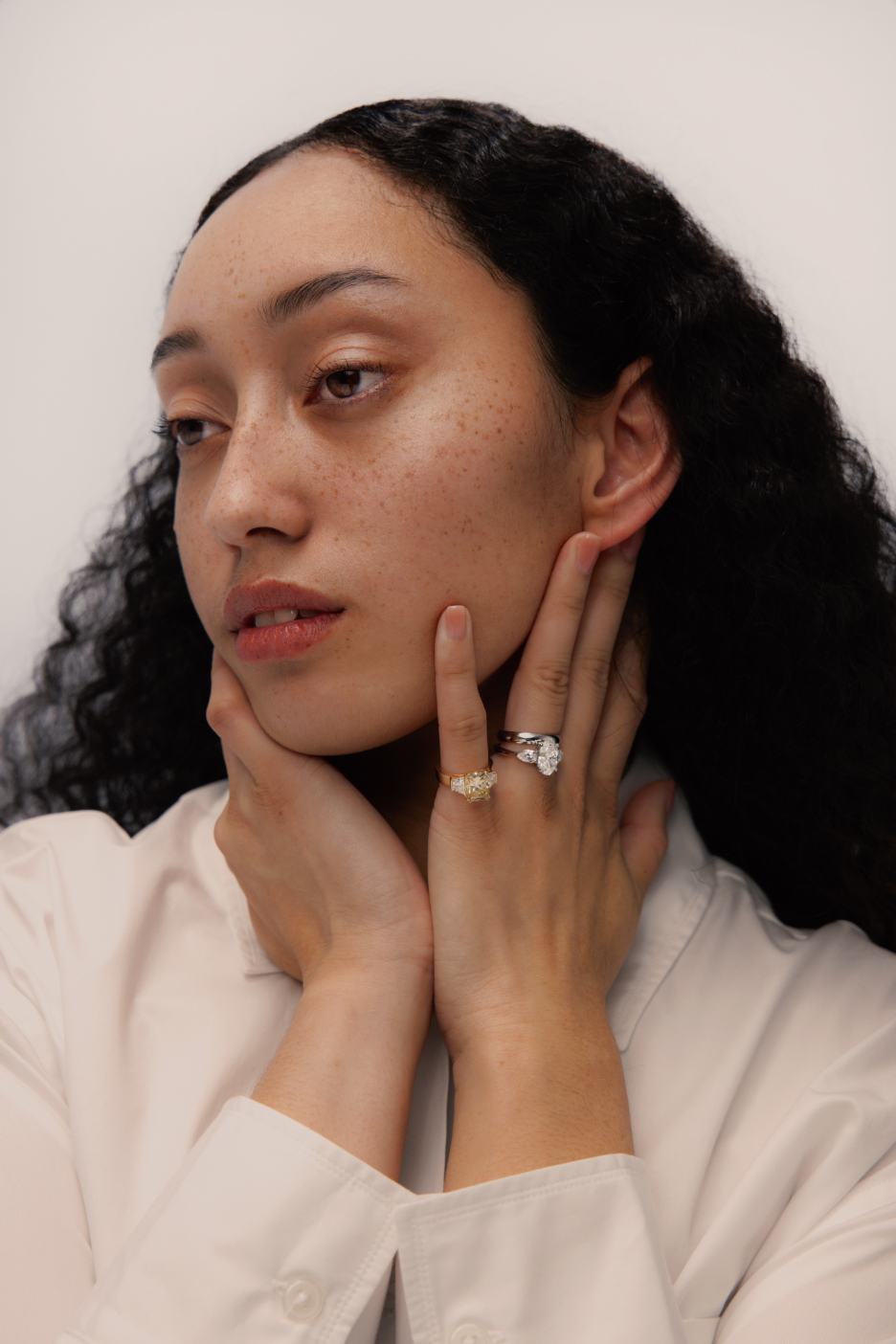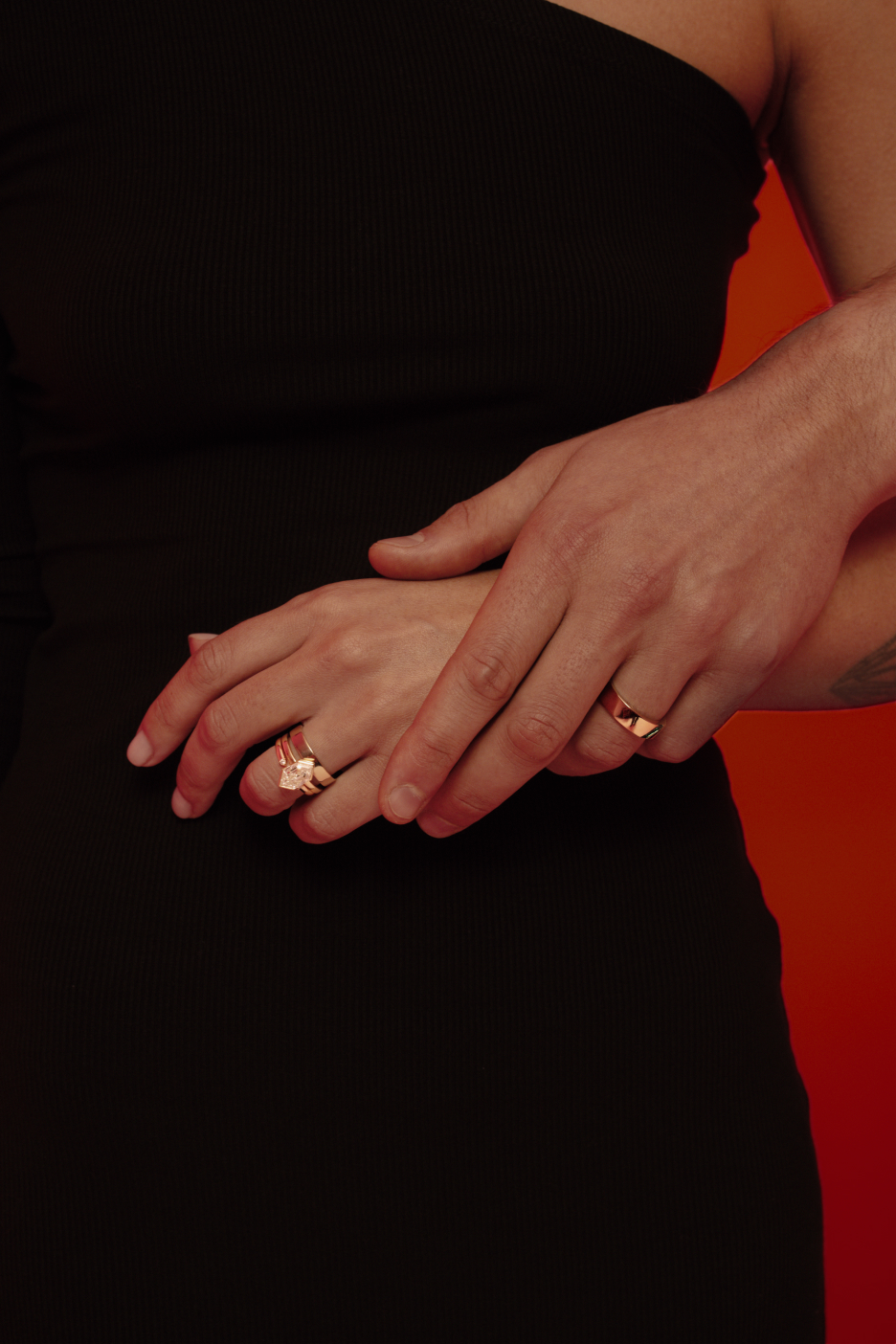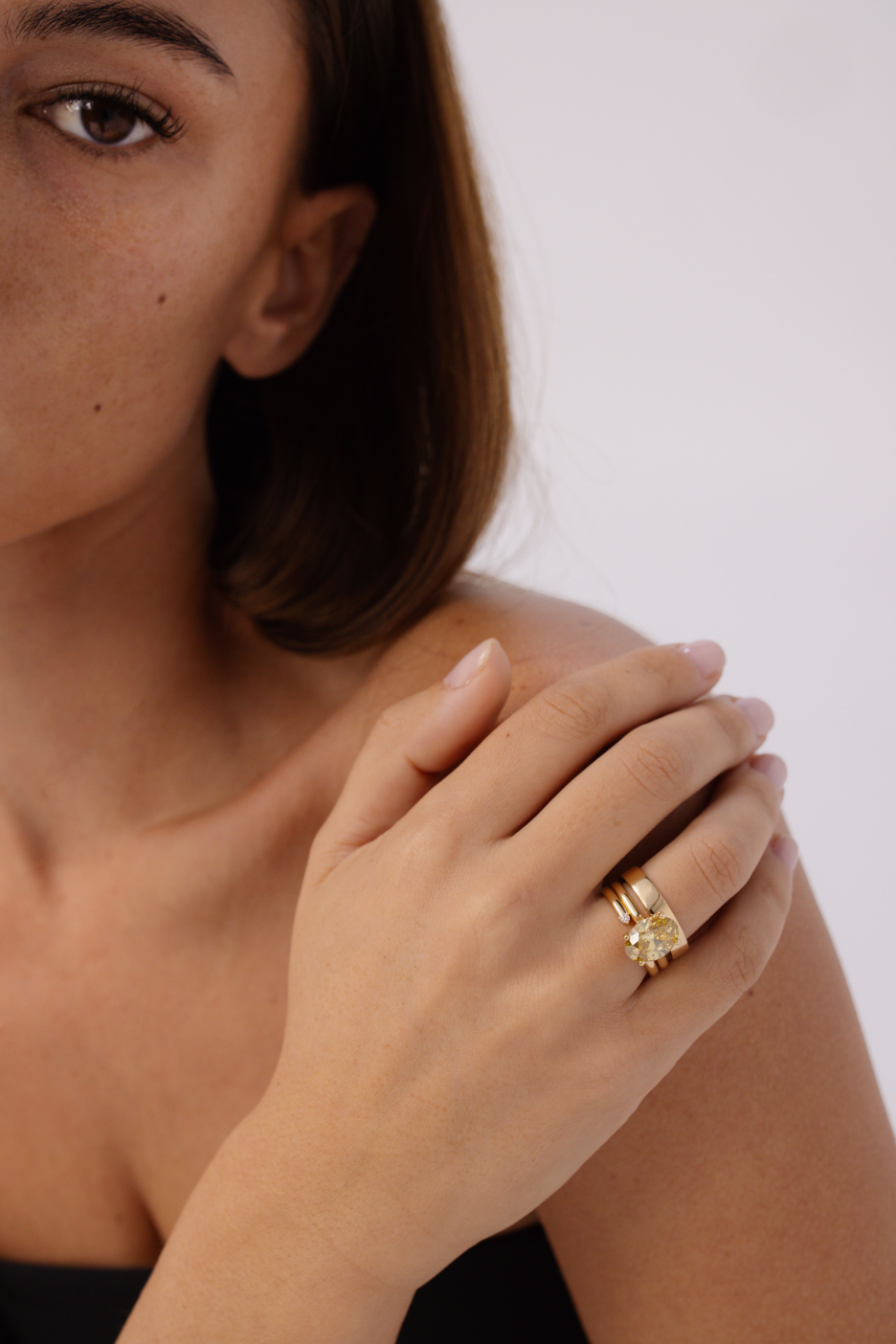How To Buy a Marquise Diamond Engagement Ring NZ

The Marquise Cut diamond engagement ring is one of the most recognisable engagement rings after the Round Cut diamond. Pronounced ‘mar-keez’, the Marquise Cut typically falls in and out of fashion and is a throwback to the art deco era, especially in New Zealand. And while it has fallen down the pecking order especially with the likes of the Oval Cut, Emerald, Princess, and Pear; it is very likely that it will make a comeback. But in saying that, Marquise cut stones are also commonly used as an accenting stone or within wedding bands.
This article will walk you through how to buy the best Marquise Cut diamond and gemstones, what you need to pay attention to when it comes to the 4Cs, and some designs that we have done at Four Words showcasing the Marquise Cut.
Why you should buy a Marquise Cut Engagement Ring
1 They make your finger appear longer and more slender
A single Marquise Cut diamond can make your finger appear longer and more slender, especially in its North-South orientation. This is because of its elongated shape. This is due to the shape not having any corners with its large surface area. Research by the Gemological Institute of America supports this too with their research.
Traditional Marquise Solitaire

** Modern East-West Marquise Solitaire**
East-West oriented Marquise Cut diamond or gemstones don’t have the same effect.

2 Appear bigger compared to other shapes
Carat is a measure of weight and not of size. 1And this is important to remember because Marquise cut diamonds have larger surface areas compared to other cuts like the Round and Asscher Cut diamonds at equivalent carat sizes.
A 1 carat Round diamond will look much smaller than a 1 carat Marquise diamond. So, while they are equivalent carat weights, the Marquise diamond will appear larger.
3 Uniquely shappd
The first Marquise Cut diamond was commissioned by King Louis XV that was to resemble the lips of his mistress Jean Antoinette. Over the years the diamond was named the Marquise, which in French means one rank below a Duke.
And while the Oval, Pear and Emerald are all elongated cuts, they are not as distinctive as the Marquise shape.
Things to know with Marquise Engagement Rings
1 They are prone to the bow-tie effect
The bow-tie effect is the formation of two small black triangles in the middle of the stone due to light blockage. With Ovals, Marquise and Pear cuts, the facets aren’t bouncing the light back from where it came in from. As a result, you get the dark triangles.
Light blockage occurs because there is not enough light to be reflected. And the reason there isn’t enough light is that your head and body is in the way!
There are two institutes that grade diamonds: the International Gemological Institute (IGI) , and the Gemological Institute of America (GIA). Neither institutes publish the effect of the bow-tie in their reports. This is because the size of the effect of the bow-tie has so many variables. This includes the amount of light in the environment and the closeness of the person examining the bow-tie. Any attempt to grade the bow-tie will be incredibly subjective. But this does have some influence on the price of a diamond.
This is why we recommend working with a respected jeweller – as picking the right Oval can be a time-consuming exercise.
When we pick out Marquise cut diamonds for our clients, we aim to minimise the effect of the bow-tie and ensure that we pick the best diamond that the eye can see.
We have dedicated a whole article on the bow-tie effect if you are interested to learn more.

2 Marquise Diamonds are prone to chipping
Because of its length and pointed ends, Marquise diamonds are prone to chipping. And even if you do find the chipped diamond, it can’t be “stuck back on” through a repair process. It is for this reason you need to make sure that the tips are protected with either a bezel or prong.
And while diamonds are the hardest material on earth, this doesn’t mean that it can't chip or scratch. It is for this reason it is important to work with a respected jeweller to ensure that your bespoke piece is made to last a lifetime.
At Four Words, we believe that protecting the tips is just one piece of the puzzle in ensuring that your Marquise diamond will last a lifetime. We take a holistic approach to your diamond jewellery. This includes considering the thickness of the prongs or bezels, the thickness of the band, and the basket used to hold the diamond or gemstone all together.
3 Consider the ratio
While the surface area of the Marquise diamond works in your favour, you do need to consider the length to width ratio. Ultimately it does come down to your preference but it is something that may not be immediately obvious. For example, you can get a wider Marquise or a thinner one. A 1.7 length to width ratio will appear wider to one that has a ratio of 2.0 or 2.5 ratio.
We prefer picking Marquise diamonds with a ratio between 1.8 - 2.1.

The Marquise Cut and The 4Cs
Cut
Cut is the most important factor when it comes to the Marquise cut. Poorly cut diamonds suffer from significant bow-tie effects. This can make your diamond look dull or glassy, especially if it also suffers from dark tips.
Clarity
Marquise diamonds don’t hide inclusions too well, especially towards the centre of the stone. We recommend you buy from VS2 and above. For stones above two carats, we recommend moving up in clarity (VS1 or higher).
Colour
Marquise don’t hide colour well. It is important to buy a diamond that appears colourless to the naked eye. This is because of the dark tips mentioned above. At Four Words, we recommend you buy from G and up. For stones larger than two carats, we recommend choosing F or higher.
Carat
The larger the carat size, the more attention you need to pay to colour and cut. The length-to-width ratio becomes increasingly more important as you go beyond 1 carat. Ideally, you want a diamond that looks aesthetically pleasing, is shiny and stands out.
How We Design Marquise Cut Diamond Engagement Rings
When we typically design Marquise cut diamonds or gemstones, we pay a lot of importance to the ratio. This ensures that you don’t get something too round or too long. And because this is a subjective decision, we get to know specifically what you are looking for first.
When we find out what you want in a Marquise cut diamond or gemstone, we do like to understand why you wouldn’t go for an Oval, Emerald or Pear. This helps us to stress test your thinking and help you to better articulate your decisions.
Decide on how you want to use the Marquise Cut
Not all Marquise diamonds need to be the star of the show. We often use Marquise Cut as accenting diamonds or gemstones. In the example below, we designed a Round Cut lab created diamond centre stone with six accenting Marquise diamonds held together with a yellow gold band.

If you like a more elongated finish, we designed a three stone lab grown diamond engagement ring featuring an Oval Cut centre stone with two accenting Marquise diamonds.

Below is another example of how we designed an Emerald Cut ruby stone with two accenting Marquise Cut diamonds in a platinum band.

Incorporate Marquise diamonds into your eternity or wedding band
Be brave to try different ring styles especially if you love the idea of making a statement. Below we designed a half eternity ring featuring Marquise and Round Cut diamonds with a platinum band. These designs can be used as wedding rings too.

FAQs
Are Marquise diamonds more expensive?
Marquise diamonds, are not more expensive than your typical Round Cut lab grown, or mined diamond equivalent. They are about the same price when compared to Round Cuts. Because they are not as popular, you may need to pay a bit more for higher carat diamonds though (over 2 carats).
Why is it called Marquise diamond?
The first Marquise Cut diamond was commissioned by King Louis XV that was to resemble the lips of his mistress Jean Antoinette. Over the years the diamond was named the Marquise, which in French means one rank below a Duke.
Do you use white gold?
We typically don’t like using white gold because it is essentially yellow gold plated with Rhodium or Palladium. This typically fades over time and requires replating. And while it is cheaper than getting a white gold band at purchase, it is more expensive over time.
Where is Four Words based?
We are based in Auckland, New Zealand, but service internationally. We have clients from all around the world and can set up appointments at a time that works for you.
